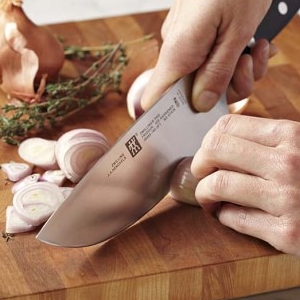I’ve long believed – since graduating from Culinary School, anyway – that Cooking is an art like any other, which demands the mastery of a set of techniques that keep cropping up over and over again in the kitchen. Let’s take some time to list them and learn how they work…
Copper Bowl Whisking of Egg Whites is just one of the many arts
to be mastered by the apprenticing Chef…
Chefs will always allow that, while Cooking is an art, Baking is a science. It’s true. Bakers spend half their time weighing ingredients in proportion to each other according to ancient and immutable rules. Bakers even record their recipes by weights of ingredients, not volumes the way all other branches of cookery do. But Bakers do use many of the same techniques that Chefs do. What follows is the simplest breakdown of the main families of techniques…
Knife Skills
Bakers have limited use for sophisticated Knife Skills, but the proper and efficient handling of bladed tools is core to the Chef’s profession. In culinary school, instructors put Knife Skills first on the curriculum because they will influence the student’s ability to master the other techniques that will be introduced down the road.
Stirring
There are several distinct types of stirring – specific ways of combining ingredients to obtain specific results. The accomplished cook will have mastered Simple Stirring (keeping the food moving in the mixing or cooking vessel), Whisking (brisk beating with a wire Whisk to introduce air into a mixture), Folding (gently combining ingredients so as not to release air from the mixture) and Blending (combining ingredients in such a way as to ensure they are equally distributed among each other) are the most-useful, most often-used stirring skills.
Moist Heat Cooking
Steaming, Boiling, Simmering, Stewing, Poaching, Coddling and Pressure Cooking are all examples of Moist Heat Cooking, in which heat is transferred to the food via hot water.
Dry Heat Cooking
Baking, Frying, Searing, Roasting, Broiling, Grilling and Smoking are all examples of Dry Heat Cooking, in which heat is applied to the food by an envelope of hot air.
The bottom line…
You can’t master any recipe if you haven’t mastered the techniques it calls for! And practice makes perfect…
Just the beginning…
The foregoing is just the most basic rundown of the universal cooking techniques that all cuisines share. We’ll take a closer look at these core families and their many sub-techniques in near-future installments of Maggie J’s FFB.
~ Maggie J.


